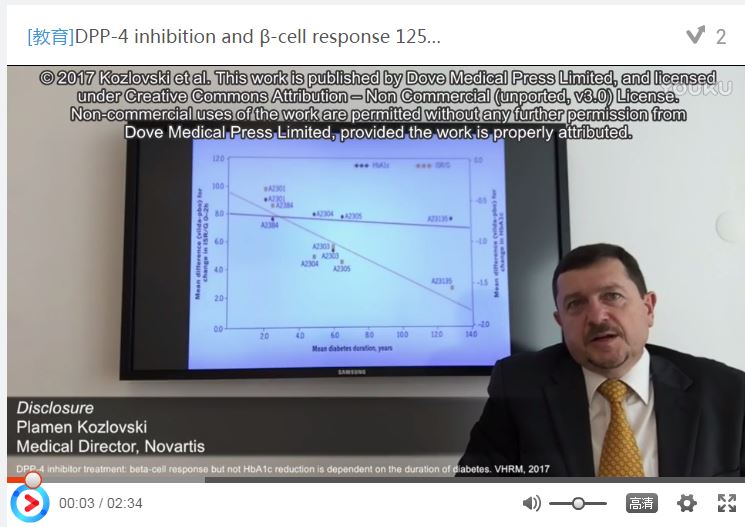9 0 5 7 8
论文已发表
注册即可获取德孚的最新动态
IF 收录期刊
- 2.6 Breast Cancer (Dove Med Press)
- 3.9 Clin Epidemiol
- 3.3 Cancer Manag Res
- 3.9 Infect Drug Resist
- 3.6 Clin Interv Aging
- 4.8 Drug Des Dev Ther
- 2.8 Int J Chronic Obstr
- 8.0 Int J Nanomed
- 2.3 Int J Women's Health
- 3.2 Neuropsych Dis Treat
- 4.0 OncoTargets Ther
- 2.2 Patient Prefer Adher
- 2.8 Ther Clin Risk Manag
- 2.7 J Pain Res
- 3.3 Diabet Metab Synd Ob
- 4.3 Psychol Res Behav Ma
- 3.4 Nat Sci Sleep
- 1.9 Pharmgenomics Pers Med
- 3.5 Risk Manag Healthc Policy
- 4.5 J Inflamm Res
- 2.3 Int J Gen Med
- 4.1 J Hepatocell Carcinoma
- 3.2 J Asthma Allergy
- 2.3 Clin Cosmet Investig Dermatol
- 3.3 J Multidiscip Healthc

DPP-4 inhibitor treatment: β-cell response but not HbA1c reduction is dependent on the duration of diabetes
Authors Kozlovski P, Bhosekar V, Foley JE
Received 27 October 2016
Accepted for publication 20 January 2017
Published 31 March 2017 Volume 2017:13 Pages 123—126
DOI https://doi.org/10.2147/VHRM.S125850
Checked for plagiarism Yes
Review by Single-blind
Peer reviewers approved by Dr Lucy Goodman
Peer reviewer comments 2
Editor who approved publication: Dr Pietro Scicchitano
Introduction: Dipeptidyl peptidase-4 (DPP-4) inhibitors reduce hyperglycemia in
patients with type 2 diabetes mellitus (T2DM) by enhancing insulin and
suppressing glucagon secretion. Since T2DM is associated with progressive loss
of β-cell function, we hypothesized that the DPP-4 inhibitor action to improve
β-cell function would be attenuated with longer duration of T2DM.
Methods: Data from six randomized, placebo-controlled trials of
24 weeks duration, where β-cell response to vildagliptin 50 mg twice daily was
assessed, were pooled. In each study, the insulin secretory rate relative to
glucose (ISR/G 0–2h) during glucose load (standard meal or oral glucose
tolerance test) was assessed at baseline and end of study. The mean
placebo-subtracted difference (PSD) in the change in ISR/G 0–2h from baseline
for each study was evaluated as a function of age, duration of T2DM, baseline
ISR/G 0–2h, glycated hemoglobin (HbA1c), fasting plasma glucose, body mass index, and mean PSD in the change
in HbA1c from baseline, using univariate model.
Results: There was a strong negative association between the
PSD in the change from baseline in ISR/G 0–2h and duration of T2DM (r = −0.89, p <0.02).
However, there was no association between the PSD in the change from baseline
in ISR/G 0–2h and the PSD in the change from baseline in HbA1c (r =0.33, p =0.52). None of the other
characteristics were significantly associated with mean PSD change in ISR/G
0–2h.
Conclusion: These findings indicate that the response of the
β-cell, but not the HbA1c reduction, with vildagliptin is dependent on duration of T2DM. Further,
it can be speculated that glucagon suppression may become the predominant
mechanism via which glycemic control is improved when treatment with a DPP-4
inhibitor, such as vildagliptin, is initiated late in the natural course of
T2DM.
Keywords: insulin, insulin secretion rate,
glucagon, α-cell, β-cell, glucagon-like peptide 1, gastric inhibitory
polypeptide
摘要视频链接:DPP-4 inhibition and β-cell response
